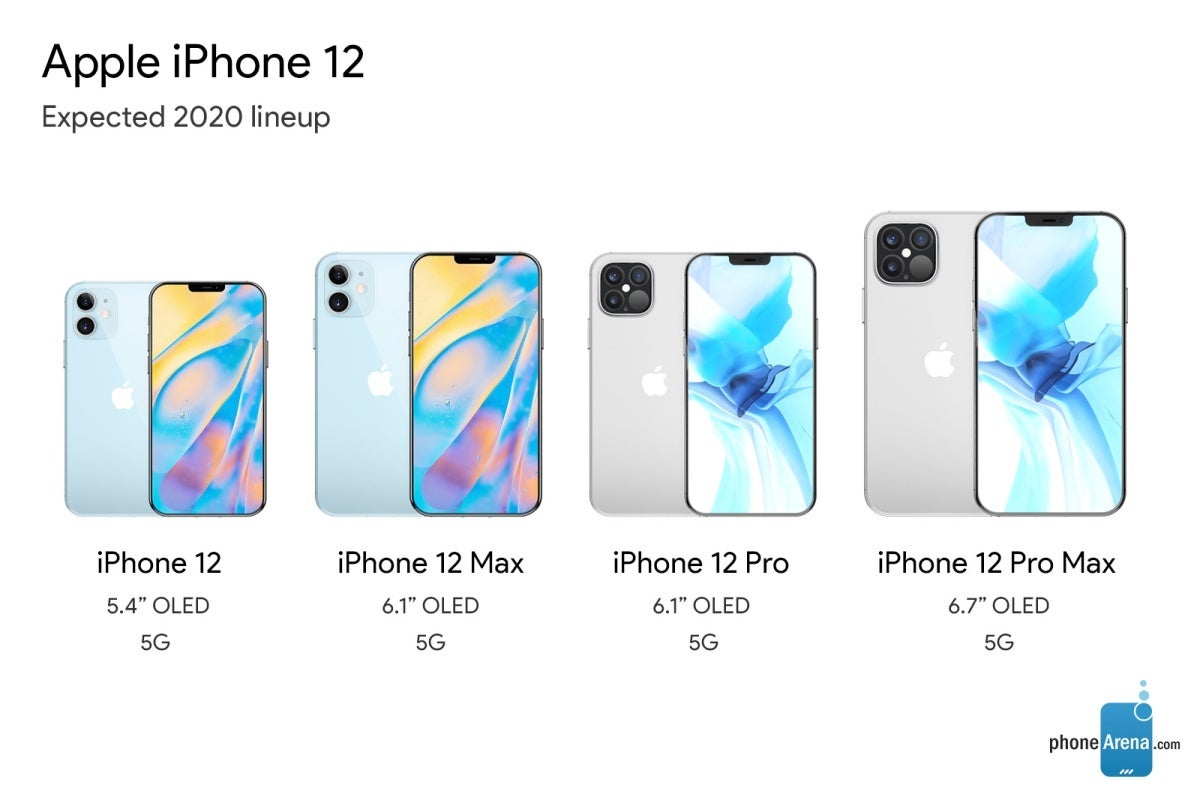Three of Apple's four iPhone 12 models could make a major 5G compromise

iPhone 12 Pro Max concept render
- iPhone 13: price, release date, features, and specs
We're obviously talking about Apple, which is widely expected to crush Samsung in 2020 5G handset volumes mere months after unveiling the iPhone 12 family.
Every single member of this highly anticipated high-end family should come with standard support for 5G connectivity, but only one variant might be able to deliver the best download speeds available in the US right now, according to a credible new report.
No Verizon 5G compatibility for the iPhone 12, 12 Max, and 12 Pro?
As you are probably aware by now, not all 5G networks are created equal. That's especially true stateside, where Verizon is still relying exclusively on a technology dubbed mmWave to enable a huge speed upgrade over its 4G LTE connectivity... that only a small number of customers in a small number of places and usage scenarios can actually experience.
While AT&T and T-Mobile have their own blazing fast and super-limited mmWave-based 5G services, they're also using something called Sub-6 technology to reach more people in more places. The Sub-6 term incorporates two different classes of 5G spectrum, namely low and mid-band, with T-Mobile currently excelling in both categories and AT&T largely focusing on the low-band class to offer a "nationwide" 5G signal that's barely faster than a traditional 4G LTE connection.

iPhone 12 concept render
Although the mmWave technology seems more desirable thanks to its significant speed improvements, its limited availability and high integration costs have made it a non-starter for many reasonably priced 5G handsets. Hence, it might not be such a bad thing that Apple is reportedly planning to equip just one iPhone 12 model with an expensive mmWave antenna.
Naturally, this would be the largest and most impressive variant, likely to be branded iPhone 12 Pro Max and capable of accommodating a hefty battery to keep up with the energy consumption of the fastest 5G flavor around as well.
Of course, the 6.5-inch giant should be universally compatible with all US 5G networks, while the 5.4-inch iPhone 12 and the 6.1-inch iPhone 12 Max/12 Pro duo are likely to settle for Sub-6 5G connectivity on AT&T and T-Mobile, as well as 4G LTE-only support for Verizon.
On the bright side, Big Red is eyeing a "nationwide" low-band 5G deployment of its own using a groundbreaking new technology called Dynamic Spectrum Sharing, so the entire iPhone 12 lineup could gain 5G support for the nation's number one wireless service provider in the near future. Who knows, maybe Verizon will be able to pull off that rollout and level the low-band playing field by the time Apple releases its four new iPhones.
Nothing new to report on the timing and specification fronts
Normally, we'd be just a couple of weeks away from a major Apple event at this point. But 2020 is definitely not a normal year, and given some of the rumors that were floating around a few months ago, we should be happy that the iPhone 12 roster is currently expected to be unveiled sometime during the first half of October.

Of the four main models mentioned above, the "budget-friendly" iPhone 12 and iPhone 12 Max are tipped to go on sale first (by the end of next month, hopefully), followed by the ultra-high-end iPhone 12 Pro and 12 Pro Max at some point in November.
In addition to (different kinds of) 5G connectivity, the four variants are likely to share OLED display technology and Apple A14 Bionic processing power, with the non-Pro duo expected to settle for a dual rear-facing camera system that could be upgraded to a quad shooter arrangement (LiDAR scanner included) on the back of the 12 Pro and 12 Pro Max.
A fifth version of the iPhone 12 may then come out in the spring of 2021 with 4G LTE support only and a truly affordable price point as a sort of spiritual successor to the popular Apple A13-powered iPhone SE released back in April.













Things that are NOT allowed: